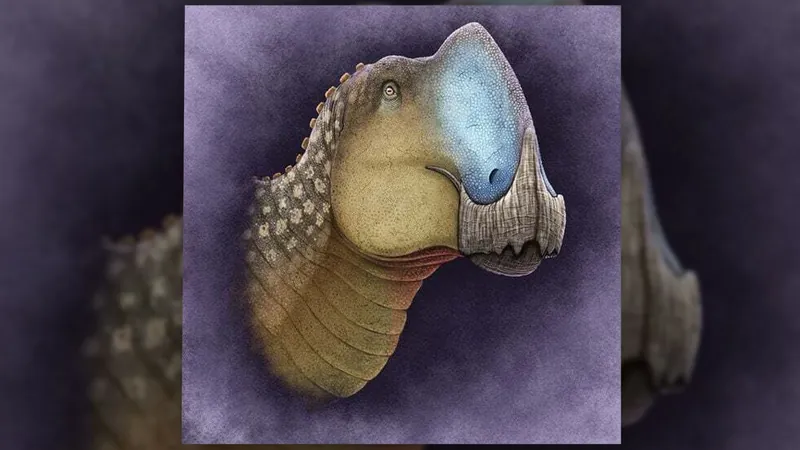
Incredible Duck-Billed Dinosaur Discovered in Mexico with a Jaw-Dropping Schnauz!
2024-09-23
Author: Li
Introduction
A recently identified duck-billed dinosaur, boasting an extraordinary snout reminiscent of Yoshi from Super Mario World, has been uncovered in Mexico, sparking excitement in the paleontological community.
Discovery of Coahuilasaurus lipani
The dinosaur, dubbed Coahuilasaurus lipani, is named after both the region of its discovery and the Lipani Apache tribe indigenous to the area. Its most striking feature? An impressively large nose, accompanied by unique tooth-like spikes that extend from the roof of its mouth. Researchers believe these formidable spikes were adapted for consuming tough, fibrous plants that thrived in the lush tropical forests of the late Cretaceous period, approximately 73 million years ago.
Research and Classification
Paleontologists first came across a partial skull of C. lipani in the 1980s within the rich fossil bed of the Parras Basin. Initially classified under a different genus, further examination using advanced analytical techniques has now clarified its identity. Lead author Claudia Serrano, a paleontologist at Benemérita Escuela Normal de Coahuila, recalls that when the research team revisited the fossil, it became evident that they were dealing with a unique species. “Our understanding has evolved significantly, leading us to these new conclusions,” Serrano stated.
Characteristics of C. lipani
The fossil, primarily consisting of the dinosaur's snout, plays a crucial role in species identification, much like the beak of a bird. The characteristic angular shape of C. lipani’s snout was instrumental in distinguishing it from related species. The discovery of the specific tooth-like protrusions also provided fresh insights; these characteristics had fallen under the radar in earlier studies.
Size and Habitat
C. lipani is believed to have reached a remarkable length of about 26 feet (8 meters)—roughly equivalent to the size of two sedans! This species belongs to a group of dinosaurs commonly referred to as "the cows of the Cretaceous," which would have grazed in the forests of prehistoric Mexico during a period marked by high sea levels and balmy temperatures.
Implications of the Discovery
This exciting find contributes to the burgeoning catalog of unique dinosaur species identified in Mexico. According to Serrano, discoveries like that of C. lipani challenge long-held beliefs about the geographical distribution of dinosaurs. Contrary to the traditional view that large species roamed expansive territories (much like modern bison migrating across North America), it appears that many dinosaur species may have had more localized ranges. The reasons behind these restricted distributions are still under investigation but could involve climatic factors, geographical barriers, or even reproductive behaviors.
Conclusion
As research continues, paleontologists eagerly anticipate uncovering more secrets about the atmospheric conditions and ecological dynamics of the time when these magnificent creatures roamed the Earth. The story of C. lipani isn’t just a thrilling chapter in dinosaur history; it’s a reminder of the complexities of life on our planet millions of years ago!




 Brasil (PT)
Brasil (PT)
 Canada (EN)
Canada (EN)
 Chile (ES)
Chile (ES)
 España (ES)
España (ES)
 France (FR)
France (FR)
 Hong Kong (EN)
Hong Kong (EN)
 Italia (IT)
Italia (IT)
 日本 (JA)
日本 (JA)
 Magyarország (HU)
Magyarország (HU)
 Norge (NO)
Norge (NO)
 Polska (PL)
Polska (PL)
 Schweiz (DE)
Schweiz (DE)
 Singapore (EN)
Singapore (EN)
 Sverige (SV)
Sverige (SV)
 Suomi (FI)
Suomi (FI)
 Türkiye (TR)
Türkiye (TR)